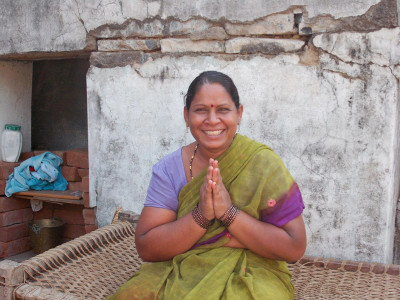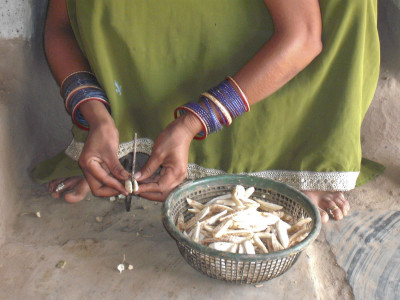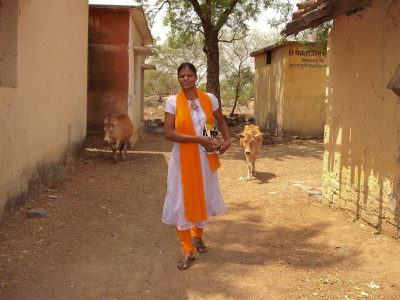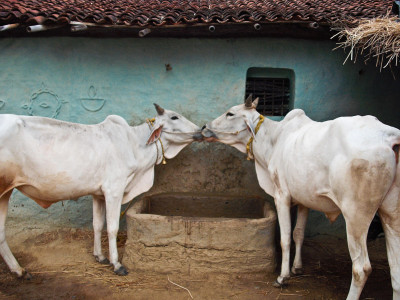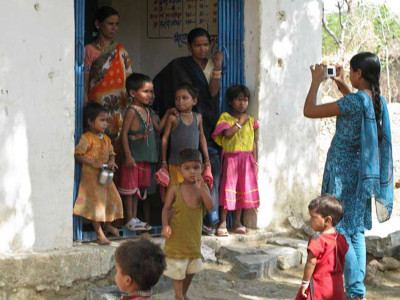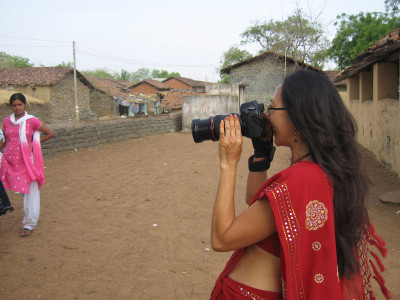Empowering Village Girls with Cameras
iTunes for free download of book
I had the pleasure of working with young village girls in Chhattisgarh, India where I conceived, developed, and implemented an economic development project using the arts, entitled India Through Girls Eyes: Empowering Village Girls with Cameras. Life for a low caste girl in a rural village in the state of Chhattisgarh (India), is a life defined by limitations. Their ability to access the tools needed to step out of those limitations is hindered by the intersections of their rural location, caste prejudices, and governmental corruption. As India races forward economically, these young women are left behind to marry young, set their dreams aside and—when there is electricity to run a television—watch the world pass them by.
Enabling the project was an NGO called Sahayog Foundation, formed by Dr. Ramdas Lamb to provide educational opportunities to low caste rural youth in Chhattisgarh, with an emphasis on young women. The projects of the foundation include supporting schools, educational stipends, and awarding bicycles for youth who want to continue their education past tenth class (there is no high school in the village).

In May and June of 2009, working with Sahayog Foundation social worker Paula Stockman, I brought a curriculum, digital cameras, laptops, and printers into the village of Matiya, transforming the village schoolhouse into a photography workshop. Over the course of their summer break, 20 girls, many of whom had never touched a camera or computer before, learned the basics of taking pictures and using computers.
My goal was to empower young women in several different ways. These girls had their horizons expanded and their self-confidence increased. With the support of their families and their new-found confidence, they were able to believe in their dreams and consider a different life, at least an education, and possibly even a career. The broader objective for the project was to shift the current view and value of young girls in Indian society. Instead of being viewed as a daughter to be married off at a young age, the hope was for these girls to be recognized as valuable members of their families with a skill that contributes to the family income and provides a service to their greater community.
In the summer of 2010, I returned to the village to follow up and see how the girls were doing. They were excited to share their lives through the photographs they had taken. In one year, three of the young girls who had never taken a photographs before this project, were generating income for their families through portrait photography. One girl in particular, Sushila, had taken hundreds of ‘formal’ portraits and was even hired by the government to serve as the census photographer in her village. Another girl, Roopwati, was taking portraits in her village to help generate income for her family in the wake of her parents’ divorce.
Contributors

Dana Forsberg received a BFA in Photography from the University of Colorado at Denver. She has exhibited her work at numerous venues, including Denver International Airport, The Contemporary Museum, and the Incheon Art and Cultural Center in Incheon, Korea. Her work has been featured in Korea Daily, Artweek, the Honolulu Advertiser, Honolulu Magazine, and the Denver Post, among others, and is in private and corporate collections in the United States and Europe. She has taught photography at the University of Hawaii Manoa, Outreach College and Iolani School.
Ramdas Lamb, our President and Co-Founder, was a resident of India from 1969 to 1978. He has been studying and working with villagers in Chhattisgarh since the mid-1970s. He is currently an associate professor of religion at the University of Hawaii, Manoa, where he has been since 1991.
Paula Stockman, our Treasurer, is a yoga teacher and a doctoral student in social workin Honolulu, Hawaii. She comes to Sahayog Foundation with a great respect for the traditional way of life in village India along with the desire to promote education and equality for all people.


